TAPPING FOR TENNIS ELBOW
Why taping for tennis elbow ?
Tapping for tennis elbow is a technique that the writer has recently learned and has found to be extremely effective. Tennis elbow is an injury that causes pain on the outside of the elbow, where the tendons attach to the bone. This pain can be debilitating and affect day-to-day activities, including sleeping, typing, and holding objects. While there are many treatments for tennis elbow that range from physical therapy to surgery, tapping has been shown to reduce pain in as little as 24 hours.
Tennis elbow is a condition that affects the tendons that connect the forearm muscles to the bones of the upper arm. It is a form of tendinitis and causes sharp pain on the outside of the elbow and forearm. Symptoms of tennis elbow include stiffness, swelling, and tenderness in the affected area. Tennis elbow can be treated by resting, wearing a brace or strap, and physical therapy.
Tapping is a form of applied kinesiology that is used to treat musculoskeletal pain. It works by re-balancing the muscular system, which in turn reduces muscle tension and pain. Tapping is typically done on acupuncture points on the body, and it can be done with or without an acupuncture needle. It has also been shown to reduce stress and anxiety, which in turn improves overall health.
Kinesiological taping is a rehabilitative cum protective use of stretchable kinesiological tapes to provide
- Reduction of pain
- Enhancing performance,
- Preventing injuries,
- Support to the joint,
- Repositioning of structure,
- Provide fascial and ligamentous correction.
- Facilitate healing
- Tennis elbow also known as lateral epicondylitis is a condition where the outer part of the elbow becomes sore and tender.
- The pain results from inflammation of the tendon that attaches muscle to the lateral epicondyle
of the humerus.
Related Anatomy :
Your elbow joint is a joint made up of three bones: your upper arm bone (humerus) and the two bones in your forearm (radius and ulna). There are bony bumps at the bottom of the humerus called epicondyles, where several muscles of the forearm begin their course. The bony bump on the outside (lateral side) of the elbow is called the lateral epicondyle.
Muscles, ligaments, and tendons hold the elbow joint together.
Lateral epicondylitis, or tennis elbow, involves the muscles and tendons of your forearm that are responsible for the extension of your wrist and fingers.
Your forearm muscles extend your wrist and fingers. Your forearm tendons —often called extensors — attach the muscles to bone. The tendon usually involved in tennis elbow is called the Extensor Carpi Radialis Brevis (ECRB).
Introduction of Tennis Elbow (Lateral Epicondylitis) :
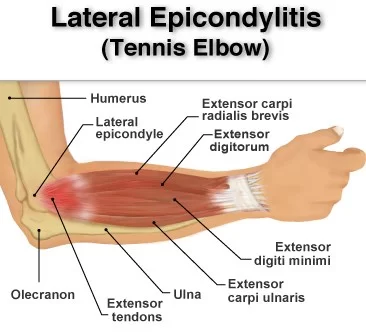
Tennis elbow, or lateral epicondylitis, is a painful condition of the elbow caused by overuse. Not surprisingly, playing tennis or other racquet sports can cause this condition. However, several other sports and activities besides sports can also put you at risk.
Tennis elbow is inflammation or, in some cases, micro-tearing of the tendons that join the forearm muscles on the outside of the elbow.
The forearm muscles and tendons become damaged from overuse repeating the same motions again and again.
This leads to pain and tenderness on the outside of the elbow.
Causes of Tennis Elbow :
- Overuse
- Repetitive activity
- Age
- Unknown
- Swimming
- Microscopic tearing
Symptoms:
- Tenderness on the outside of the elbow.
- Morning stiffness of the elbow with persistent aching.
- Soreness of the forearm muscles.
- Elbow pain is worse when grasping or holding an object.
(a sign that active inflammation is present because of the tendinitis)
-Strain on the elbow tendons.
KINESIO TAPING FOR TENNIS ELBOW :
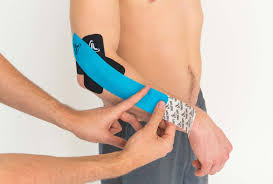
- Taping has a good placebo pain relief effect and also improves pain-free grip strength in patients with chronic tennis elbow. A study compared the effect of kinesio taping with exercises to sham tape with exercises and exercise-only groups on patient-rated tennis elbow evaluation, visual analog scale (VAS), grip strength, and the disabilities of the arm, shoulder, and hand (QuickDASH) scales.
- The results of the study support the combination of Kinesio tape and exercises.
How to use tape for tennis elbow?:
- Tonus down muscle technique for ECRB muscle ( extensor carpi radialis brevis).
- Space technique for lateral epicondyle.
- The Fascia technique is distal to the origin of ECBR.
How to remove Kinesio Taping for tennis elbow :
So now you’ve got your tape on and you’ve gotten that extra support during your
chosen sporting activity, it’s time to take it off,
so let us ease the process of removing kinesiology tape for you.
# The best tip we can offer when it comes to removing your kinesiology
tape is to peel the skin from the tape, not the tape from the skin.
# But in terms of the actual process, firstly make sure you’re removing
the tape in the same direction as the growth of the hair underneath it,
and whatever you do don’t rip the tape off like a plaster!
# Start slowly, folding the corners of the edge back gradually,
ensuring that you’re laying the removed tape on the back of the applied tape,
as opposed to pulling the tape above and away from your arm.
# As you’re peeling off the tape, hold your skin down with your other hand and either tap it,
or pull it gently in the opposite direction of the tape.
This helps the skin and the tape to separate more efficiently but with no discomfort.
If the tape has been applied over a particularly hairy part of the body,
it helps to press down on the tape as you are peeling it off, as the pressure helps avoid further pain.
It’s wise to have shaved the area before applying the tape but,
as this isn’t always practical, taking this precaution will be necessary for some.
Need a little extra assistance? Apply oil directly onto the tape,
rub it in, and wait around 10 to 20 minutes before removing it slowly.
This will help reduce the stickiness of the tape and make it easier to remove

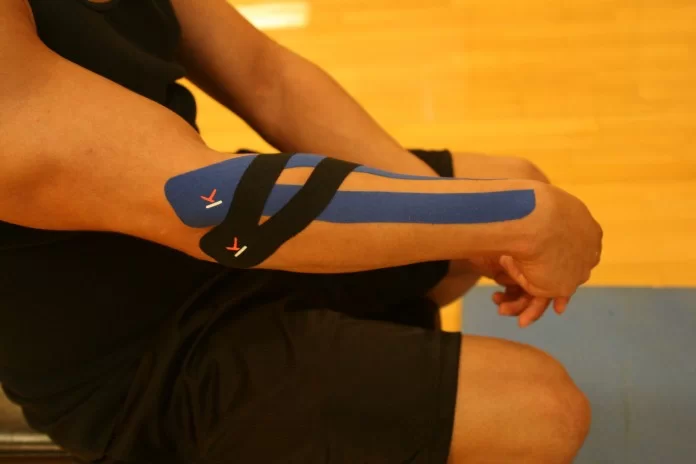

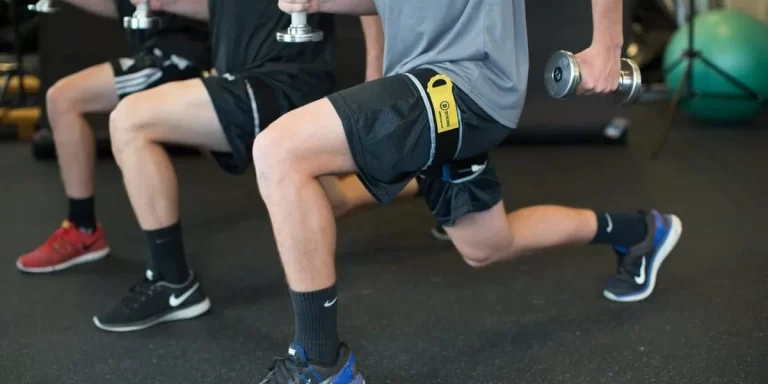
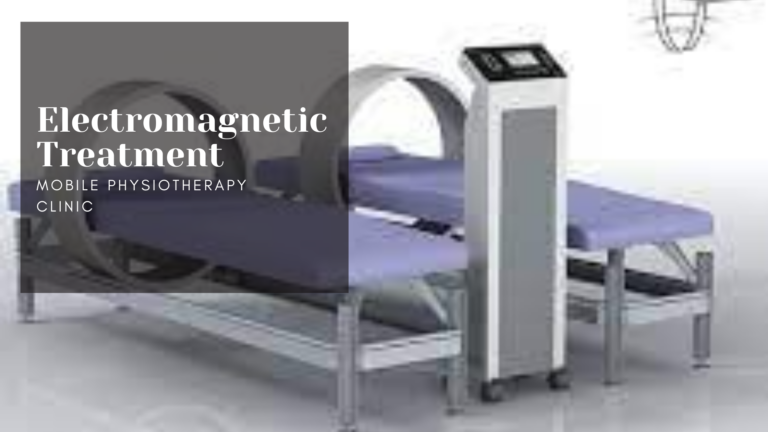

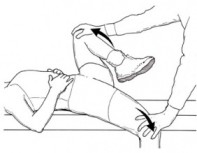
One Comment